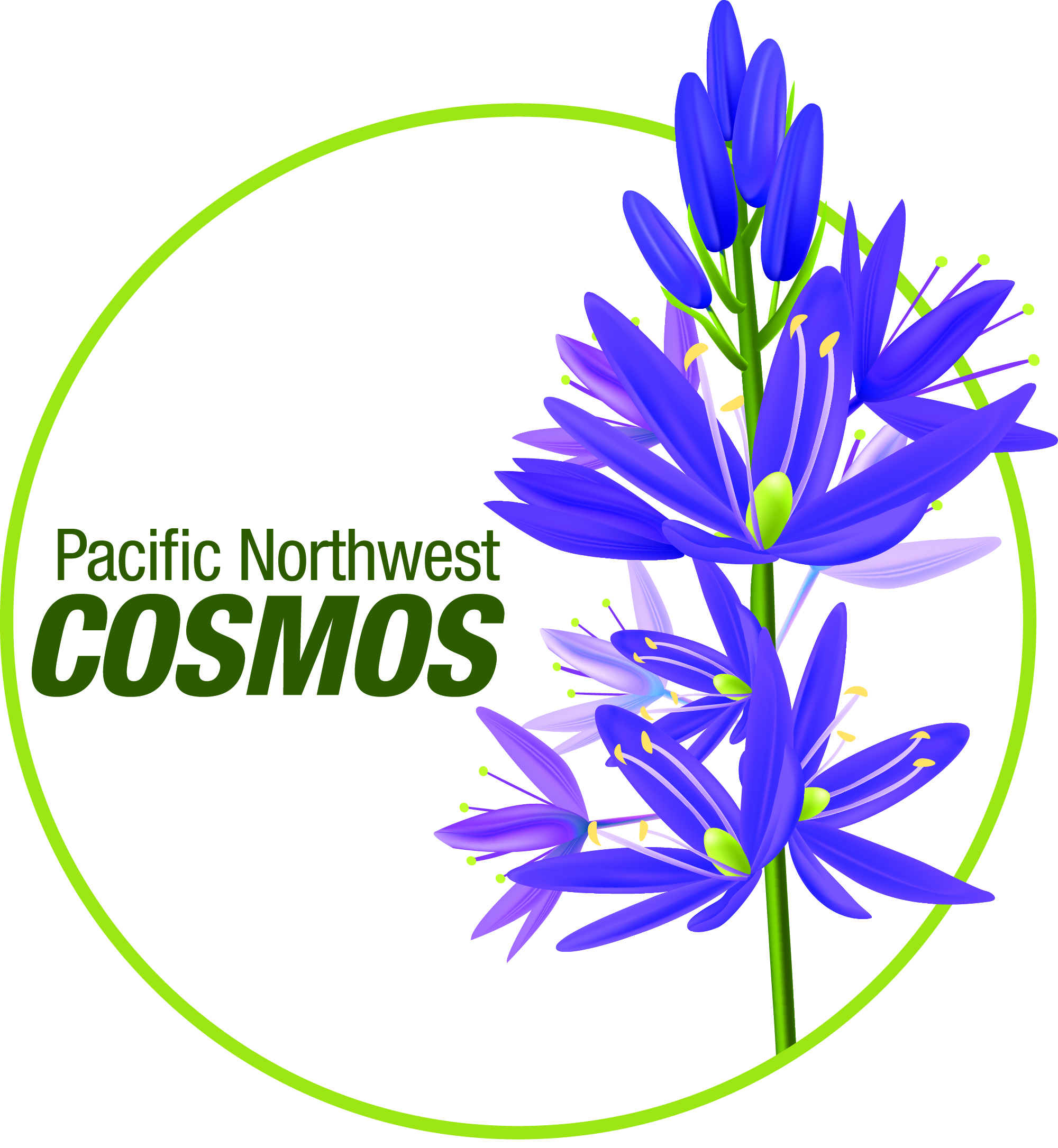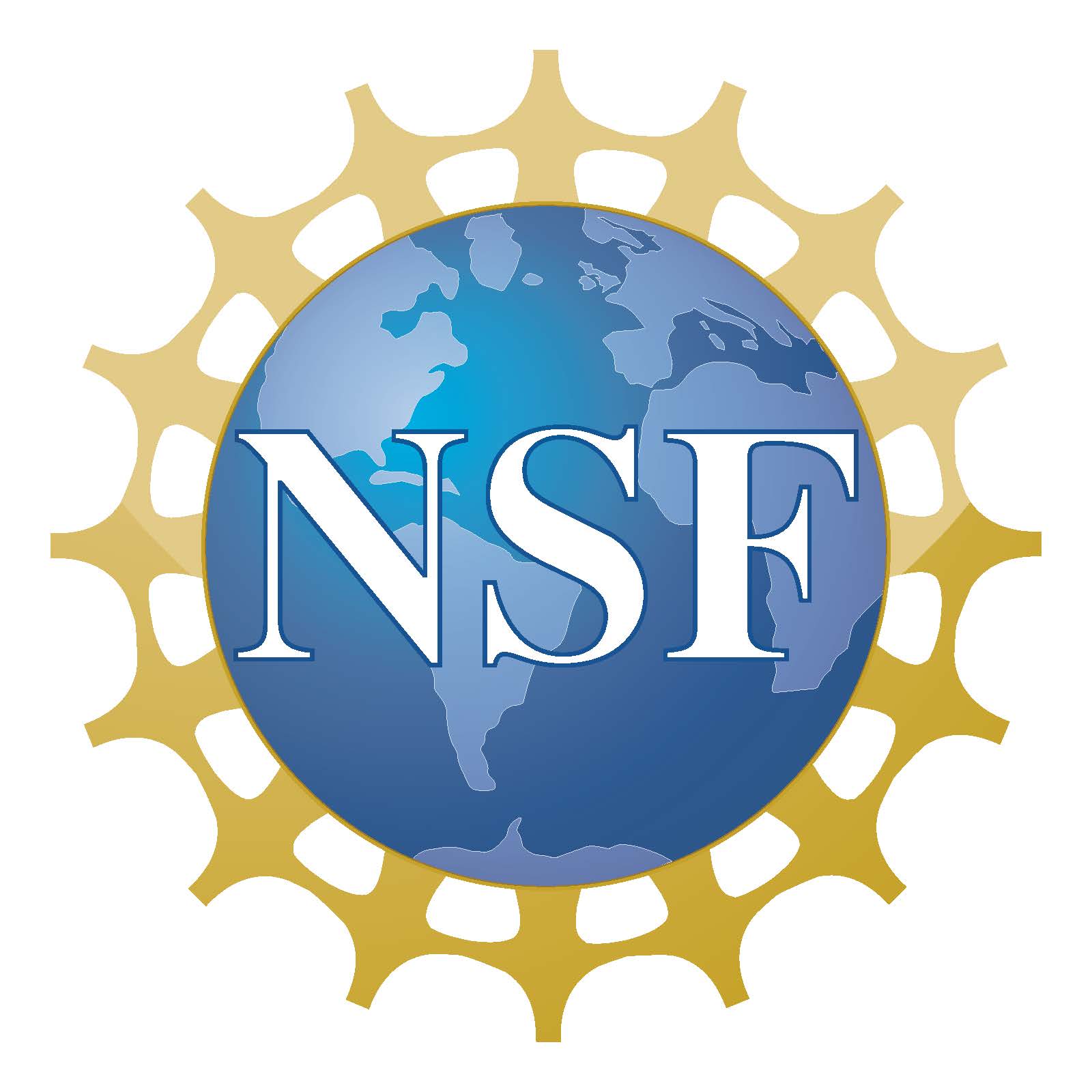 The PNW-COSMOS Alliance selected the Camas plant as its logo. Camas (Camassia quamash (Pursh) Greene) is native to the Pacific Northwest and Plateau Regions, which are the ancestral lands of many Native peoples. The Camas stem supports the plant in much the same way that Indigenous and STEM knowledge support our students and their communities.
The PNW-COSMOS Alliance selected the Camas plant as its logo. Camas (Camassia quamash (Pursh) Greene) is native to the Pacific Northwest and Plateau Regions, which are the ancestral lands of many Native peoples. The Camas stem supports the plant in much the same way that Indigenous and STEM knowledge support our students and their communities.
The Camas roots are a solid and enduring part of the Camas plant community. The Camas bulb is a true prize for those that use the Camas plant as a food source. Camas does not grow alone; it grows in a vibrant community that is abundant in water, various grasses, sunshine and clean air. All are important for the growth of Camas, which in turn contributes to the health of its community.
The focus of the PNW-COSMOS Alliance is the students. The Alliance recognizes that, like the Camas plant, students need a vibrant community to “grow” and thrive. STEM and Indigenous knowledge are woven together to support our students and their communities, enabling them to thrive in both their academic and home environments. The students’ “roots” are in their home communities, while the “bulb” is the knowledge they gain in their graduate studies and outside the classroom to share with the entire community. We truly are all related, interconnected, and essential to each other and the natural world.
 The primary sponsor for PNW-COSMOS is the National Science Foundation (NSF), Directorate for Education and Human Resources (EHR), Division of Human Resource Development (HRD). This project is supported by: Collaborative Research: The Pacific Northwest Alliance to develop, implement and study a STEM Graduate Education Model for American Indians and Alaska Natives. This is an AGEP – T: Alliance for Graduate Education and the Professoriate – Transformation under HRD grants # 1432932 (Washington State University), #1432910 (University of Idaho), #1432694 (University of Montana), and #1431773 (Montana State University). Any opinions, findings, and conclusions or recommendations expressed in this material are those of the author(s) and do not necessarily reflect the views of the National Science Foundation.
The primary sponsor for PNW-COSMOS is the National Science Foundation (NSF), Directorate for Education and Human Resources (EHR), Division of Human Resource Development (HRD). This project is supported by: Collaborative Research: The Pacific Northwest Alliance to develop, implement and study a STEM Graduate Education Model for American Indians and Alaska Natives. This is an AGEP – T: Alliance for Graduate Education and the Professoriate – Transformation under HRD grants # 1432932 (Washington State University), #1432910 (University of Idaho), #1432694 (University of Montana), and #1431773 (Montana State University). Any opinions, findings, and conclusions or recommendations expressed in this material are those of the author(s) and do not necessarily reflect the views of the National Science Foundation.